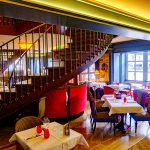Bordeaux is not only one of France’s biggest cities, it’s also the name of the popular red wine region. Bordeaux wines are famous the world over, but the city is quite beautiful as well.
Bordeaux, with its 250,000 inhabitants (and total of 1.1 million in the suburbs) is France’s 6th largest city. Although inland, Bordeaux is also a harbour city seeing many cruise ships dock here.
The city is flat, and despite its size, it is conducive to walking (although there is quite a good bus/tram infrastructure).
Roads are often wide, although in the inner city, roads can become quite narrow, and you need to share that road with cars. There are several pedestrian shopping streets, parks and boulevard with large walking paths in the middle.
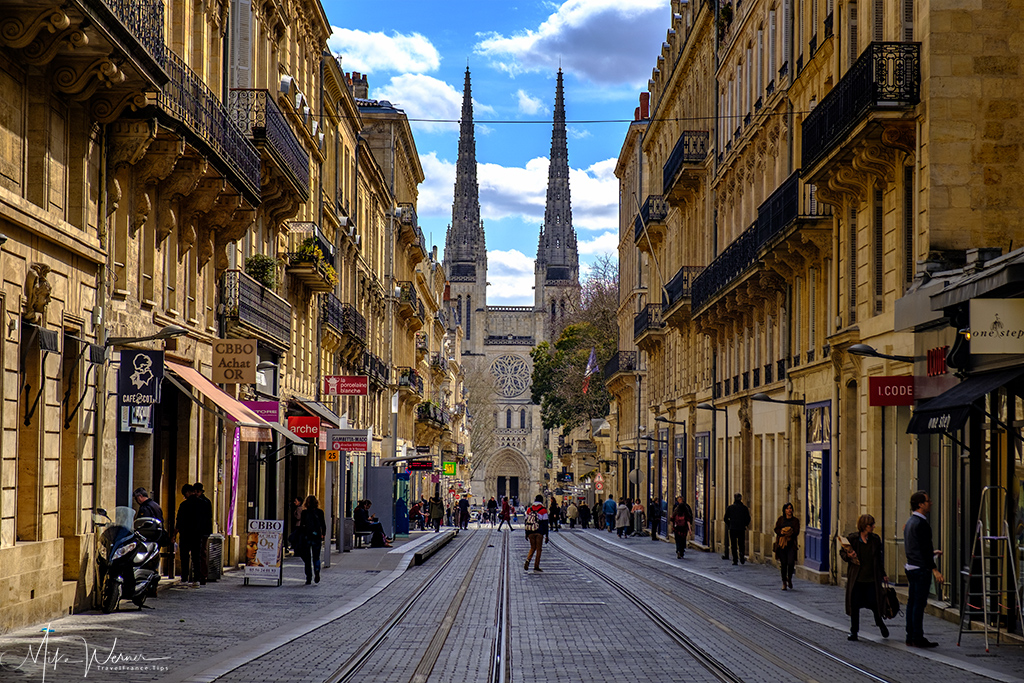 Road and tram track leading to the Bordeaux Cathedral
Road and tram track leading to the Bordeaux Cathedral Pedestrian street in Bordeaux
Pedestrian street in Bordeaux Shops in pedestrian street in Bordeaux
Shops in pedestrian street in Bordeaux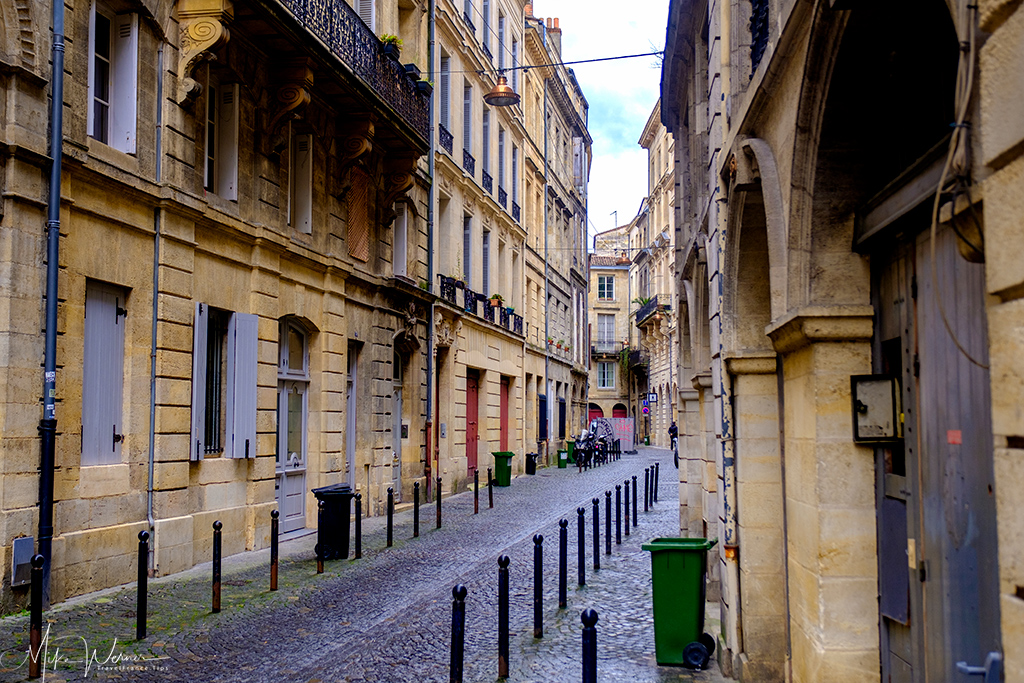 Narrow roads in inner city of Bordeaux
Narrow roads in inner city of Bordeaux Large pedestrian area in between car lanes in Bordeaux
Large pedestrian area in between car lanes in BordeauxWhen you walk on the many streets of Bordeaux, often you will find a “passage”. A “passage”, also known as a “galerie”, are a number of shops inside a building. It’s not a shopping mall, since it’s often just one small alley inside a building with shops and maybe a restaurant or two.
They are ideal for when it’s raining…and are often upmarket.
 Shopping galerie in one of many buildings inside Bordeaux
Shopping galerie in one of many buildings inside Bordeaux Luxurious shopping galerie in Bordeaux
Luxurious shopping galerie in Bordeaux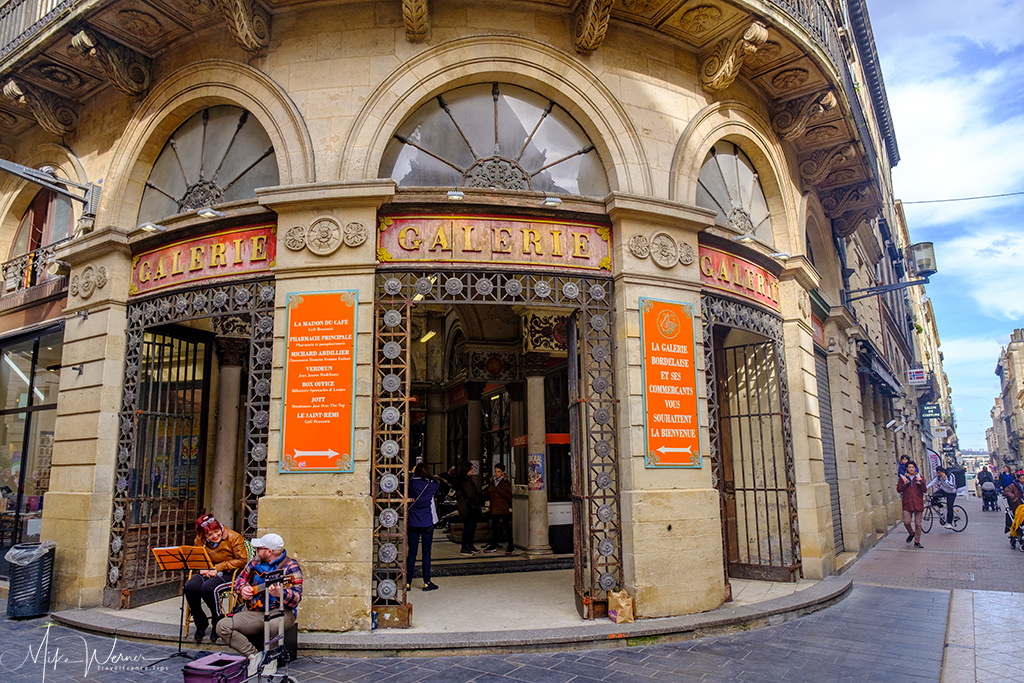 One of many shopping galleries in Bordeaux
One of many shopping galleries in BordeauxBuildings
Most of the buildings in Bordeaux are majestic (but not all, see further below). For that matter, the city looks a lot like Paris or Lyon. The 4 to 8 floors, “warm” stones and facades that are often highly decorated, give the city the majestic look.
Here are photos of some of the many fine buildings you can see in Bordeaux. It is but a very small selection.
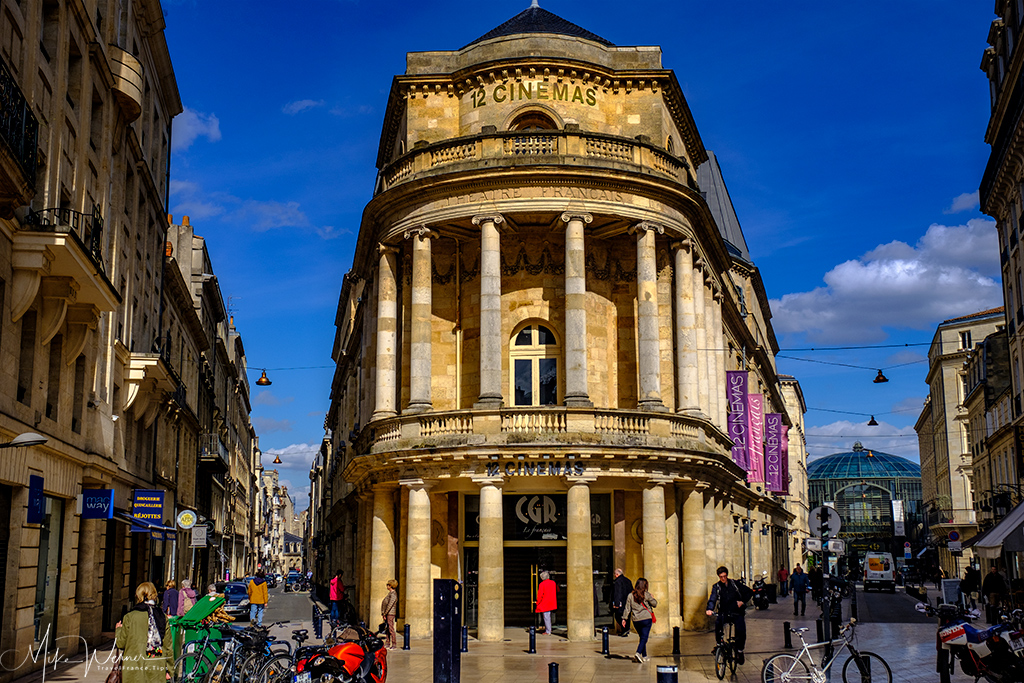 Cinema complex in Bordeaux
Cinema complex in Bordeaux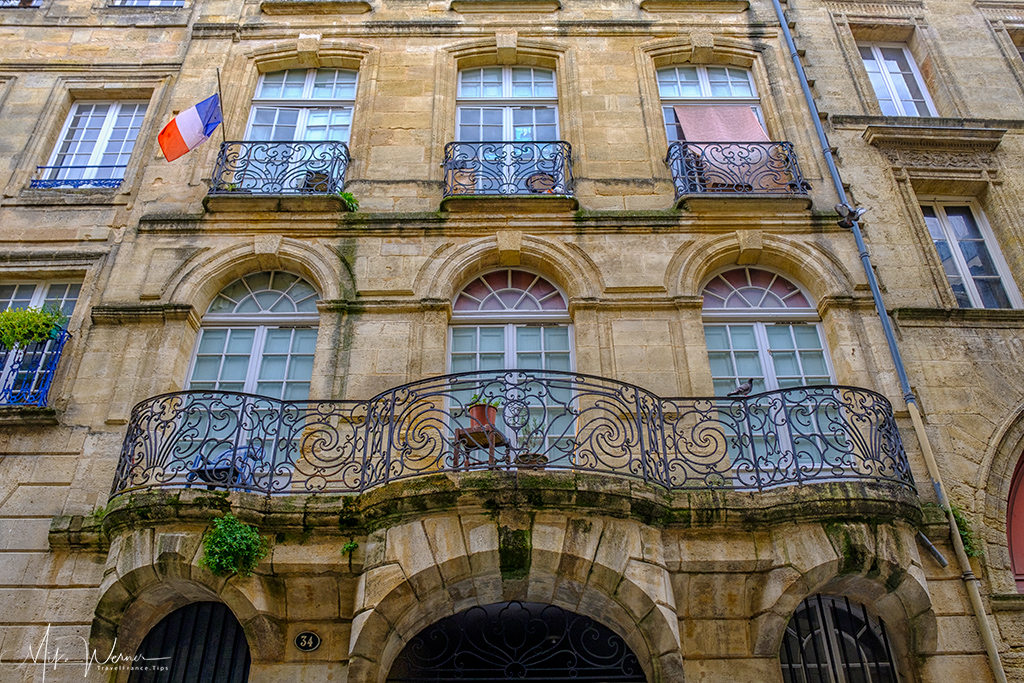 Balcony on a Bordeaux building
Balcony on a Bordeaux building Terrace outside majestic buildings in Bordeaux
Terrace outside majestic buildings in Bordeaux A ‘modern school’ for young girls in Bordeaux
A ‘modern school’ for young girls in Bordeaux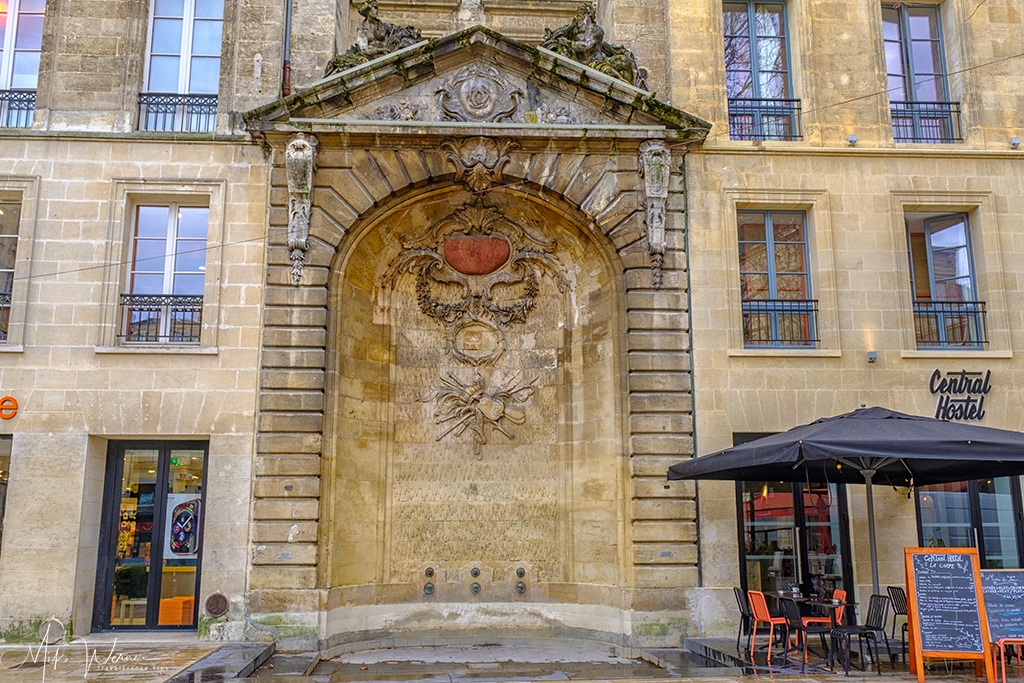 Facade of a building in Bordeaux
Facade of a building in Bordeaux Shopping street and it buildings (and statue) in Bordeaux
Shopping street and it buildings (and statue) in Bordeaux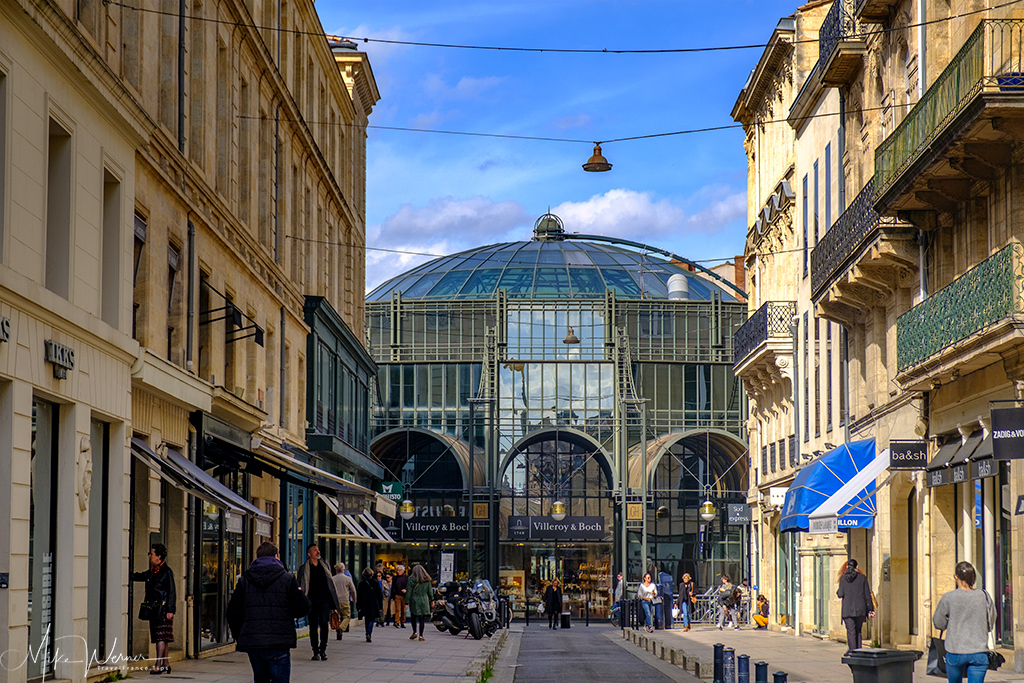 Shopping mall in Bordeaux
Shopping mall in Bordeaux Modern buildings on the inner city outskirts in Bordeaux
Modern buildings on the inner city outskirts in BordeauxOpera/Theatre
One of the more imposing buildings in Bordeaux is the “Grand Theatre de Bordeaux“; the opera and theatre building. The building sits on a square that also houses the imposing Intercontinental Hotel.
The building was inaugurated in 1780. Click here to access their website to see the opera program (in French only)
 The Opera/Theatre (Grand Théâtre de Bordeaux)
The Opera/Theatre (Grand Théâtre de Bordeaux) Side view of the Opera/Theatre (Grand Théâtre de Bordeaux)
Side view of the Opera/Theatre (Grand Théâtre de Bordeaux)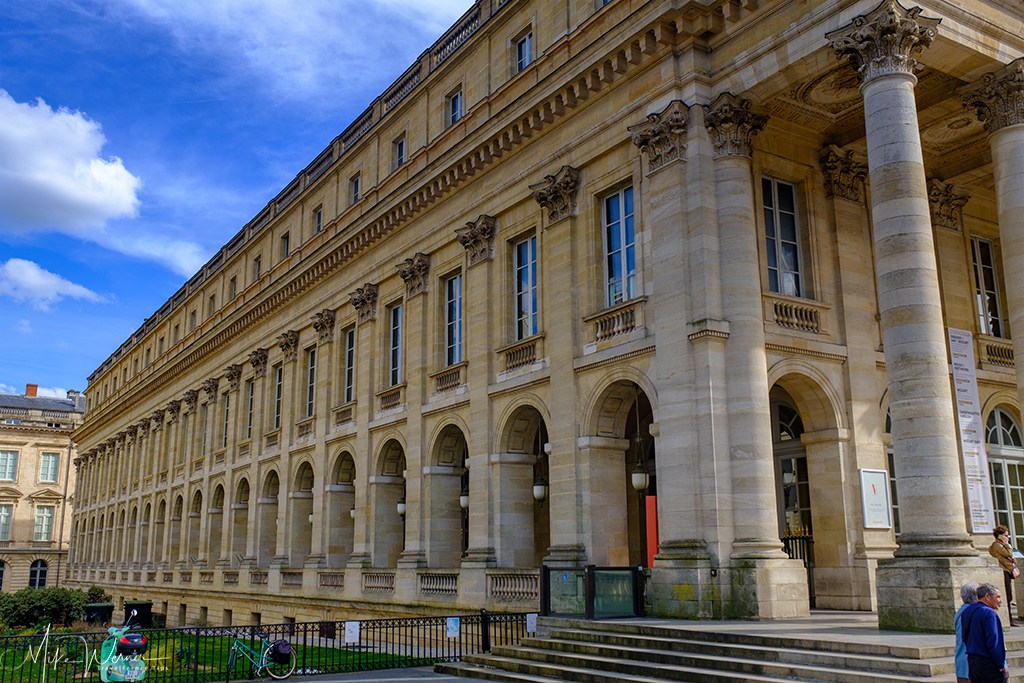 Other side of the Opera/Theatre (Grand Théâtre de Bordeaux)
Other side of the Opera/Theatre (Grand Théâtre de Bordeaux)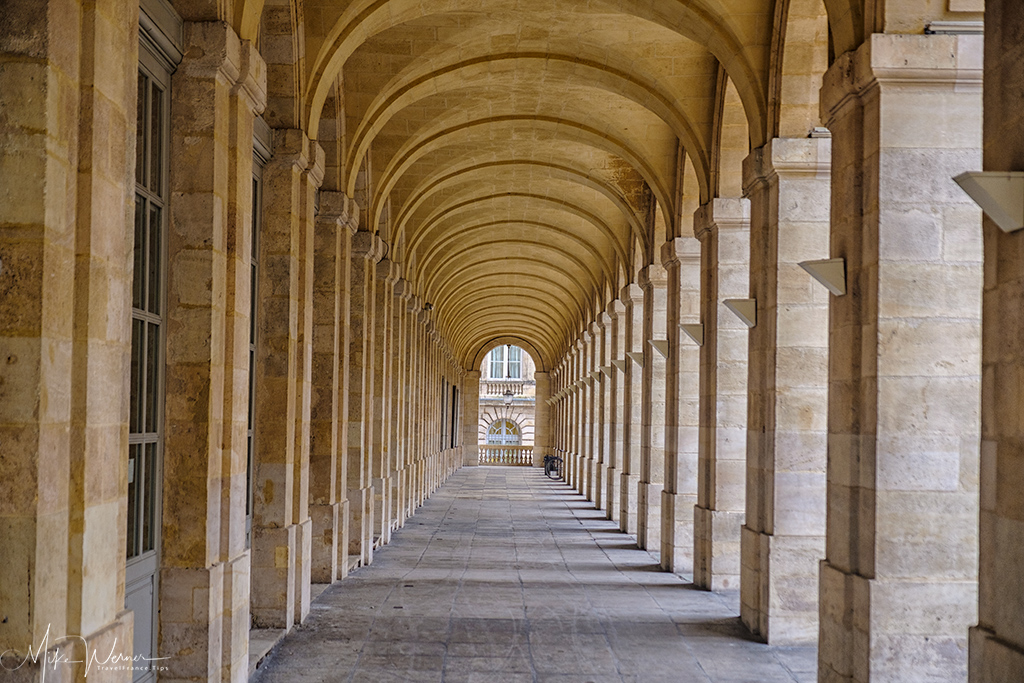 Between the pillars of the Grand Theatre of Bordeaux
Between the pillars of the Grand Theatre of Bordeaux The InterContinental Hotel (Grand Hotel de Bordeaux)
The InterContinental Hotel (Grand Hotel de Bordeaux)Girondin Monument
Standing on the square (Place de la Comedie) where you find the Opera and the Intercontinental Hotel, you will see further up the very big Monument for the “Memory of the Girondins” (the area of France you are in is called Gironde).
 The Girdone Monument (Memoire des Girondins) in Bordeaux
The Girdone Monument (Memoire des Girondins) in Bordeaux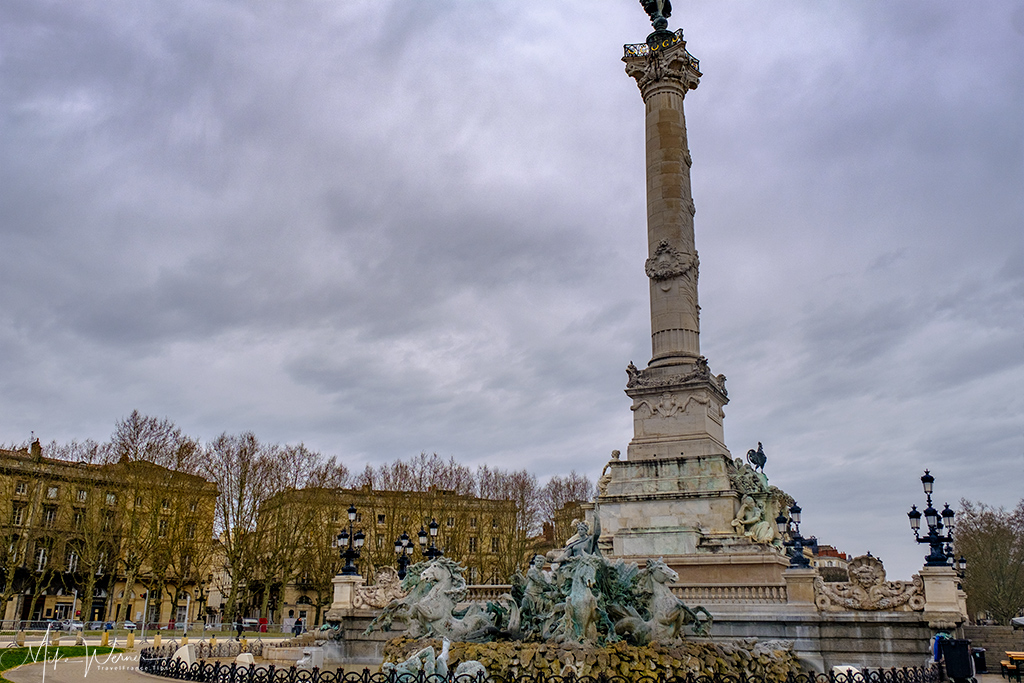 The Girdonde Monument with fountain in Bordeaux
The Girdonde Monument with fountain in Bordeaux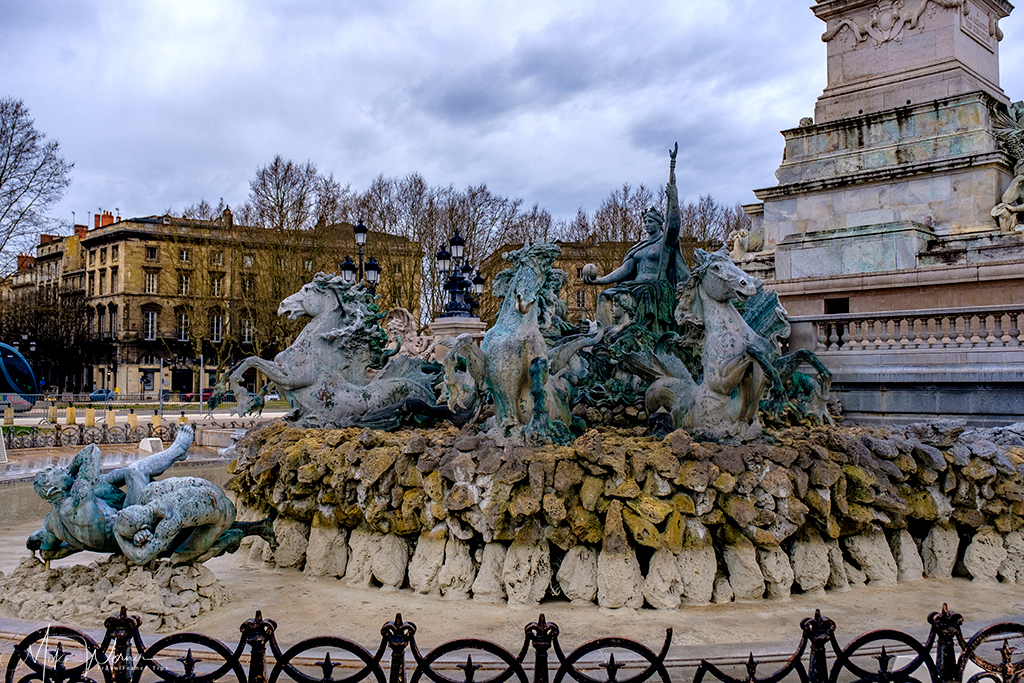 The sculpted fountains of the Gironde Monument in Bordeaux
The sculpted fountains of the Gironde Monument in Bordeaux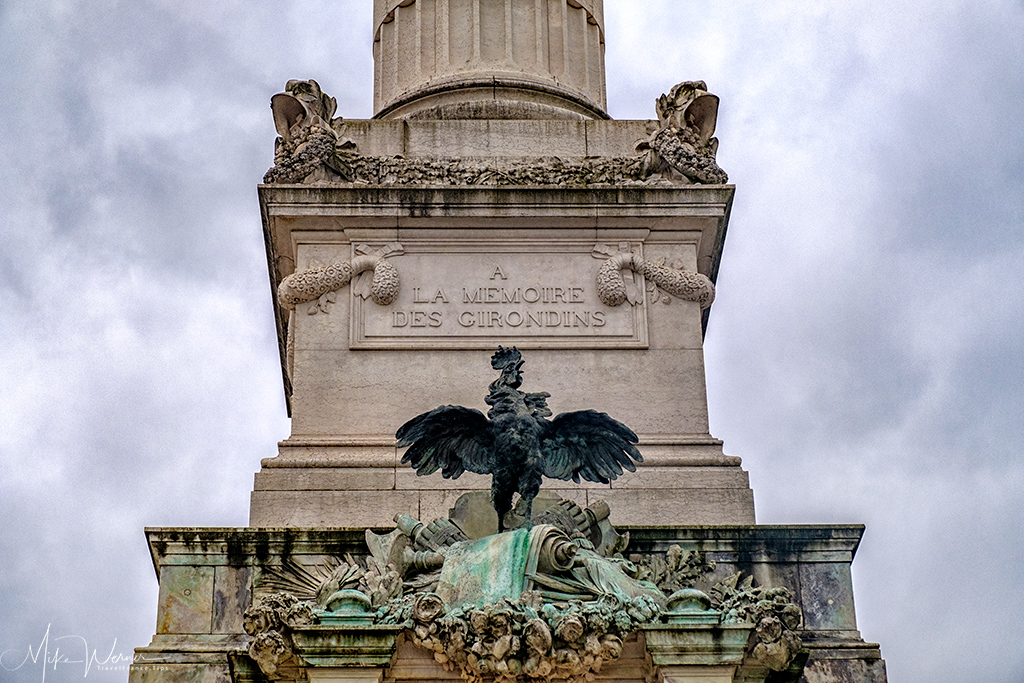 The inscription says ‘To the memory of the Girondines’
The inscription says ‘To the memory of the Girondines’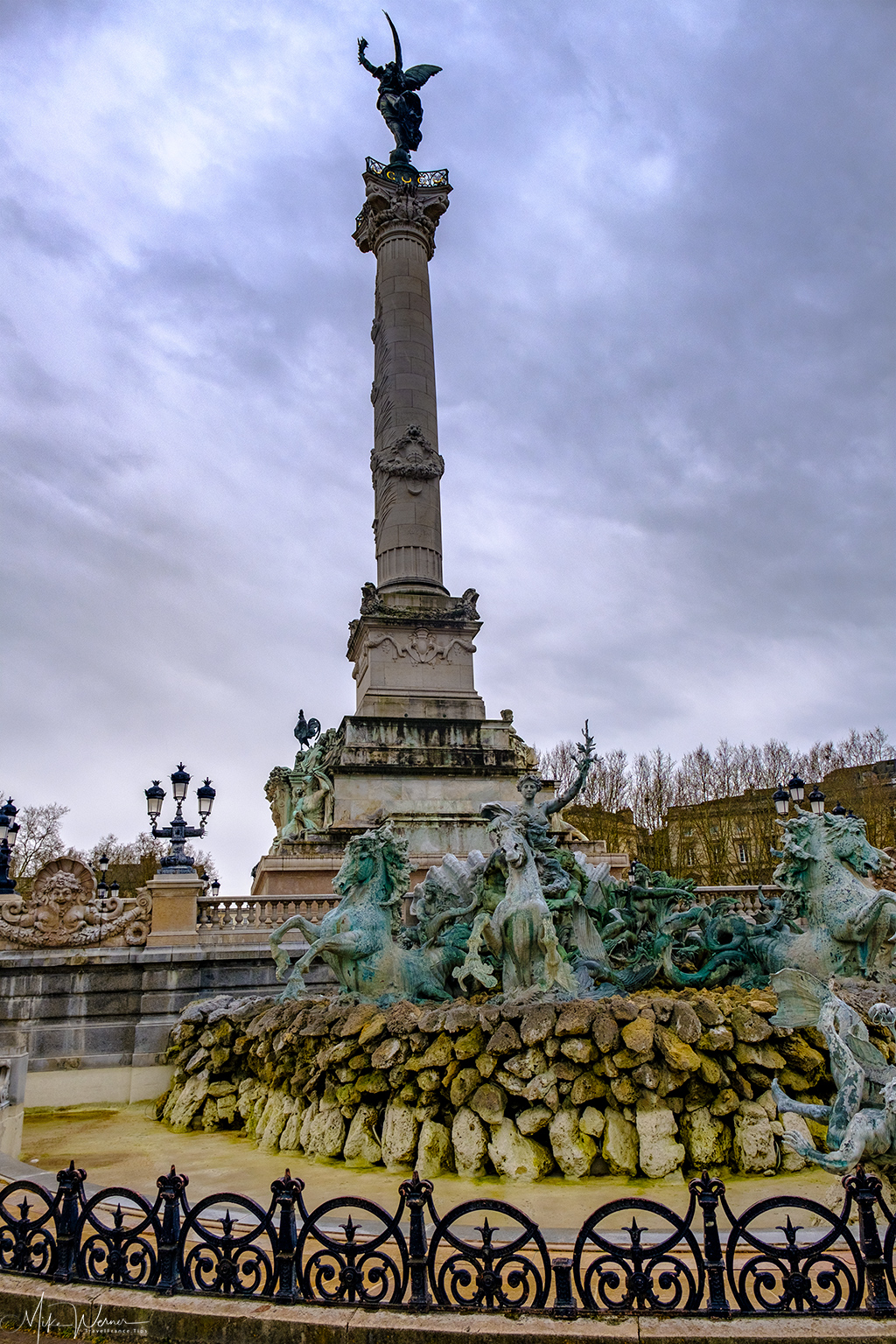 The Girondin Monument in Bordeaux, side view
The Girondin Monument in Bordeaux, side view The other sculpted fountain of the Girondin Monument in Bordeaux
The other sculpted fountain of the Girondin Monument in BordeauxThe Monument was built in 1894, and was dedicated to the Members of Parliament who died during the French Revolution in a period called “La Terreur”. It was to be built on the spot that in 1794 the last MPs were executed. However, it was after a long deliberation and several competing proposals built where it is today.
Initially the monument was to hold a very ornate fountain designed by Bartholdi, but the fountain was deemed too expensive, and instead the fountain was built in Lyon (click here to see the Lyon fountain).
City Hall (Mairie/Hotel de Ville)
The City Hall (Mairie or Hotel de Ville in French) of Bordeaux is very imposing. Also known as the “Palais Rohan”, the building is located on a square which also has the cathedral.
The Palace was built in 1771. It was initially built as the Bishop’s house, but after the French revolution, it became the revolutionary courts, then the governor’s (prefecture) building, then the Imperial Palace for Napoleon I, then a Royal Castle for Louis XVIII, and finally in 1835 it became the City Hall.
 Bordeaux’s City Hall on a pleasant square
Bordeaux’s City Hall on a pleasant square Mairie (City Hall) of Bordeaux
Mairie (City Hall) of Bordeaux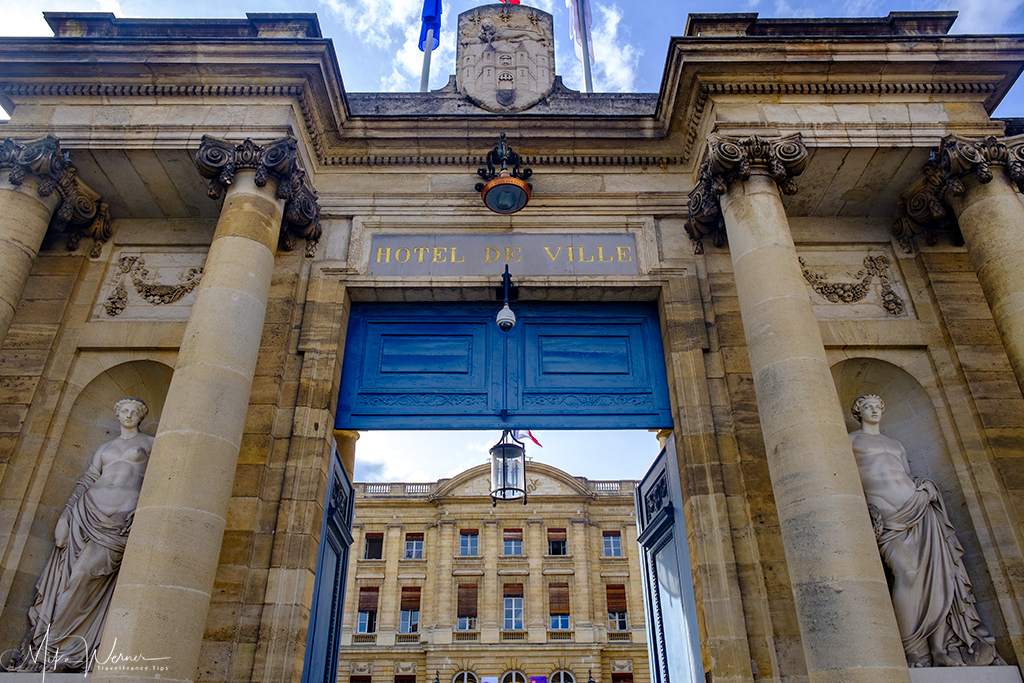 Entrance/Gate of the Bordeaux City Hall
Entrance/Gate of the Bordeaux City Hall Inside the Bordeaux City Hall courtyard
Inside the Bordeaux City Hall courtyard Inside the Bordeaux City Hall right hand courtyard
Inside the Bordeaux City Hall right hand courtyard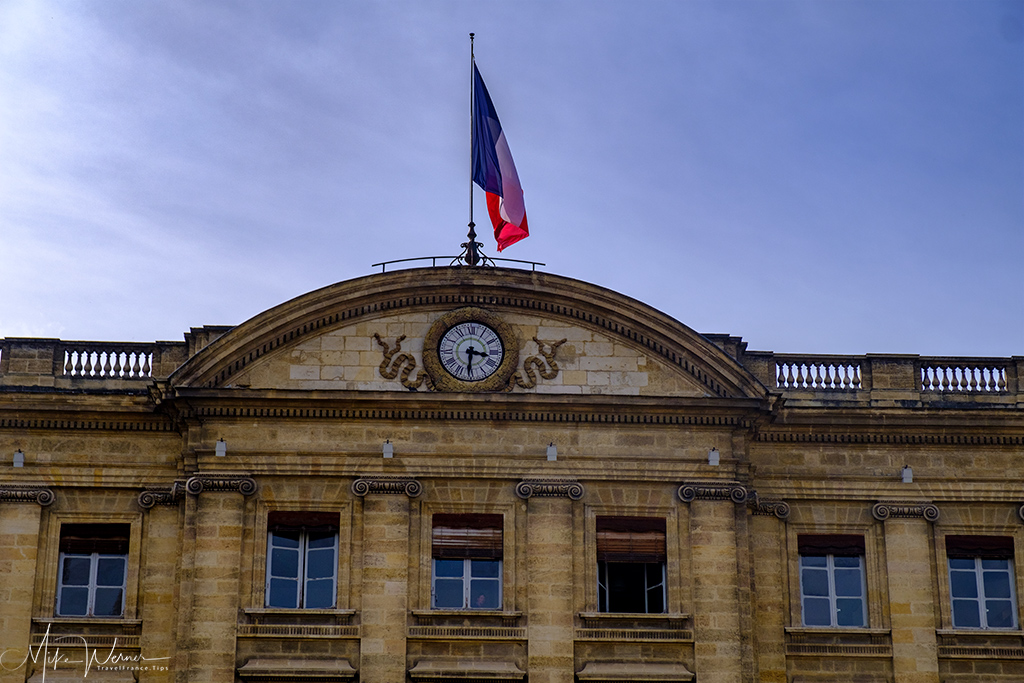 The clock in the main facade of the Bordeaux City Hall
The clock in the main facade of the Bordeaux City HallOn the same square, you will find the “Cathedrale Saint-André de Bordeaux”, the cathedral of Bordeaux:
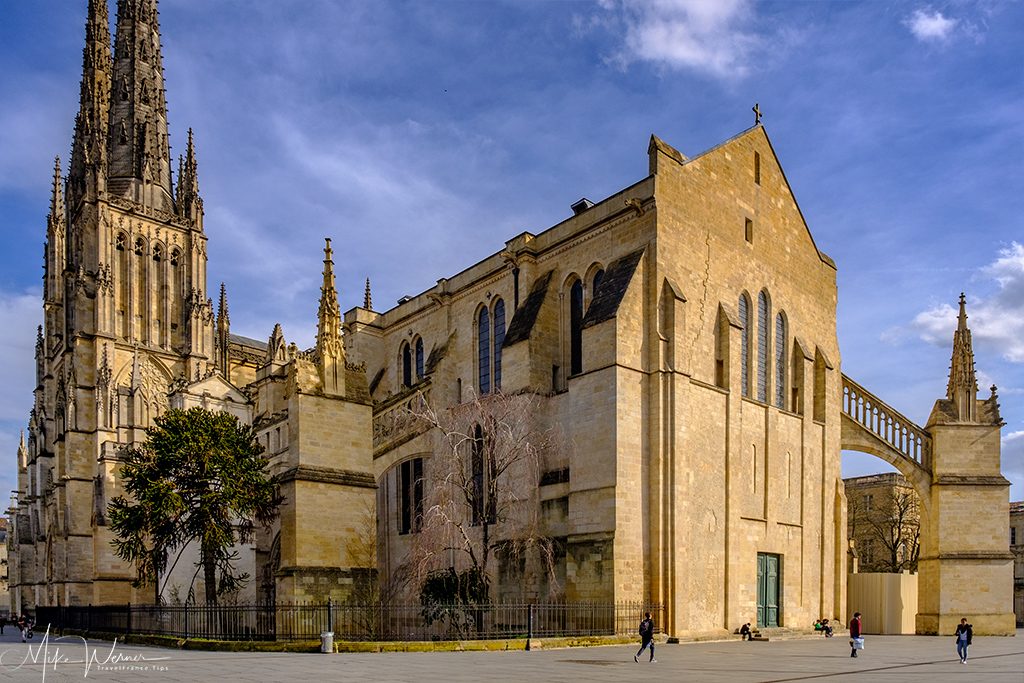
Click here to read our review of the cathedral.
Shops
There are many shops in the city of Bordeaux, many, if not most, part of large chains. Most of these can be found in the shopping malls or large pedestrian streets. But if you wander alongside the little roads in the city centre, at times you will encounter very nice shops, either by their design, or by their contents. Some of them have very interesting facades.
 Speciality grocery shop in Bordeaux
Speciality grocery shop in Bordeaux Chocolates and other specialities in a shop in Bordeaux
Chocolates and other specialities in a shop in Bordeaux Pharmacy in Bordeaux
Pharmacy in Bordeaux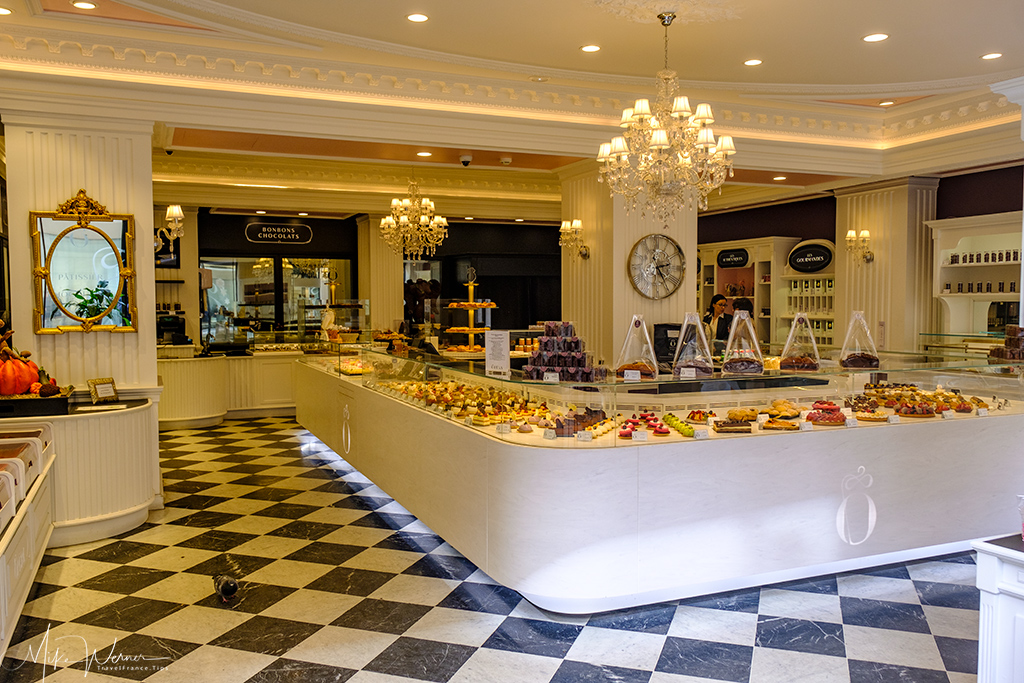 Upmarket pastry shop in Bordeaux
Upmarket pastry shop in Bordeaux Perfume shop in Bordeaux
Perfume shop in Bordeaux Hams shop in Bordeaux
Hams shop in BordeauxGates
Bordeaux, like most cities from the Middle Ages, had a fortified wall around it. To be able to enter the town in those days, you had to pass through gates, that were often heavily fortified.
The fortified wall has disappeared over the centuries, but the gates are all mostly there. And some of them are works of art.
Porte Gailhau
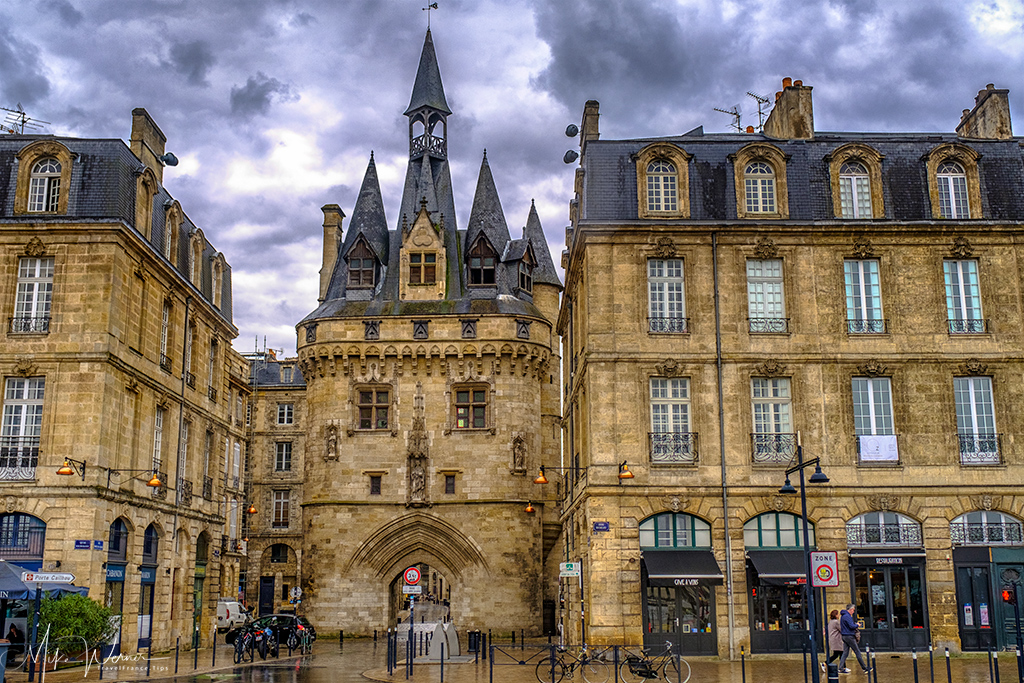 Gate (Porte) Cailhau close to the river in Bordeaux
Gate (Porte) Cailhau close to the river in Bordeaux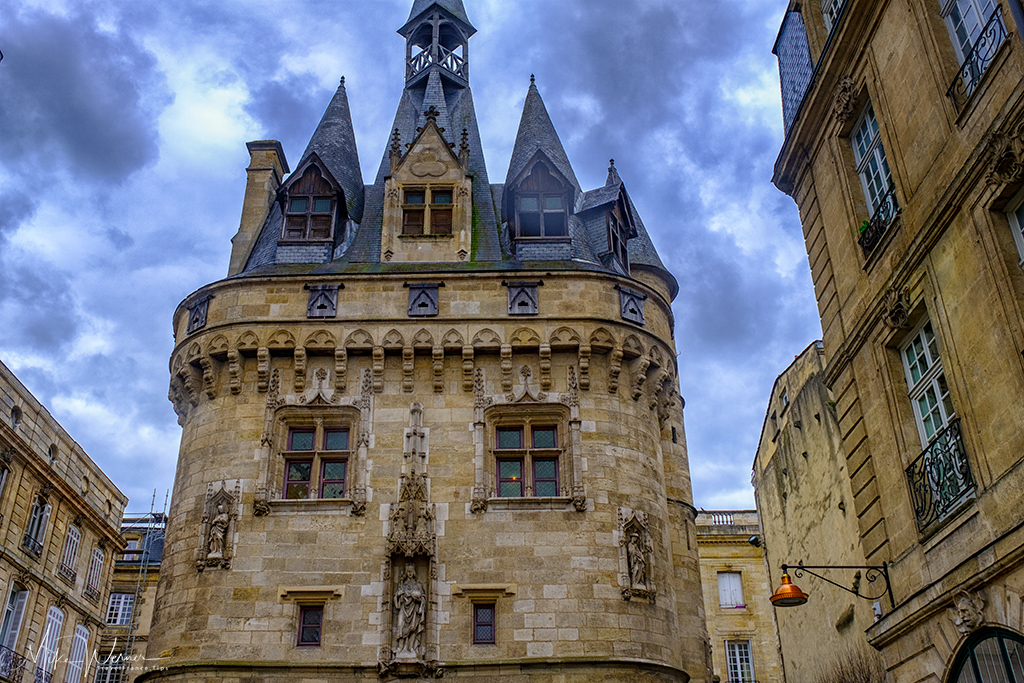 Top part of the Gate (Porte) Cailhau in Bordeaux
Top part of the Gate (Porte) Cailhau in Bordeaux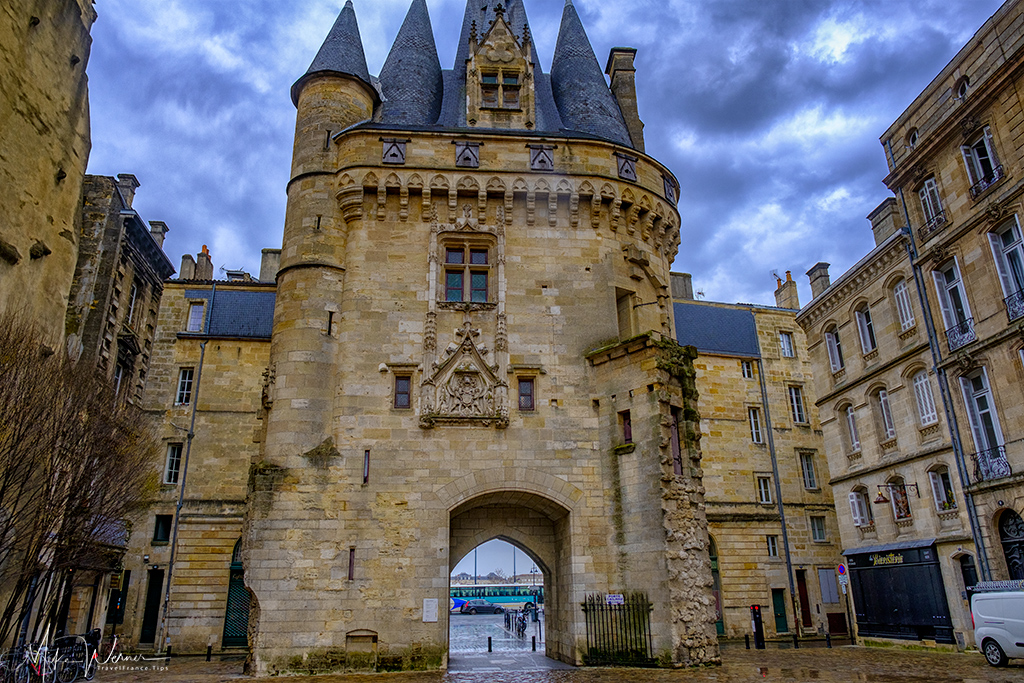 City part of the Gate (Porte) Cailhau in Bordeaux
City part of the Gate (Porte) Cailhau in Bordeaux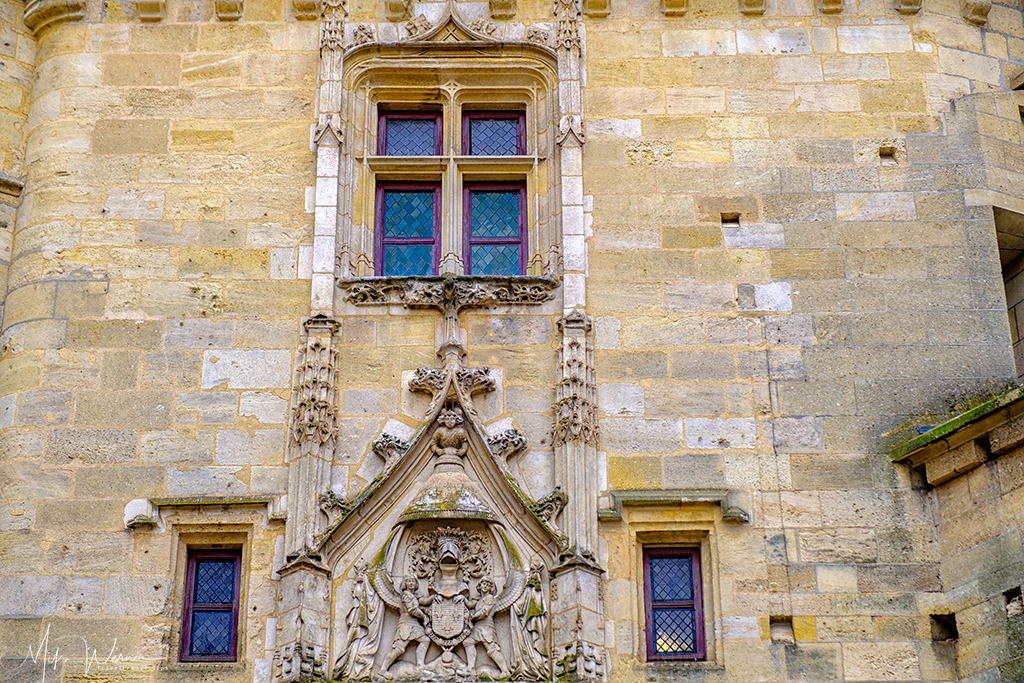 Details of the Gate (Porte) Cailhau in Bordeaux
Details of the Gate (Porte) Cailhau in BordeauxThe main gate was built in the 15th century, and at the time there was no bridge, only boats that moored outside the gate.
The fortified walls (at the time, since they are no longer there) dated back to the 14th century.
Porte Dijeaux
 Porte Dijeaux in the West of Bordeaux
Porte Dijeaux in the West of BordeauxThe gate dates back to the Romans when they conquered the area. It had stayed intact for centuries, and only was moved in the 14th century when the new fortified walls were placed.
Porte de Bourgogne
 Porte de Bourgogne in Bordeaux
Porte de Bourgogne in Bordeaux View to the top of the Porte de Bourgogne in Bordeaux
View to the top of the Porte de Bourgogne in Bordeaux River side view of the Porte de Bourgogne in Bordeaux
River side view of the Porte de Bourgogne in BordeauxThe Porte de Bourgogne is relatively “new”, since it dates back to 1750. The gate replaced an older gate used for the fortifications, and was the “official” gate. The road that led into the city through this gate went all the way to Paris.
Porte Saint-Eloy/Grosse Cloche de Bordeaux
The Porte Saint-Eloy (Eloi in French) is no longer there, but instead you will find this magnificent gate/tower:
 Porte Saint-Eloy/Grosse Cloche de Bordeaux in Bordeaux
Porte Saint-Eloy/Grosse Cloche de Bordeaux in Bordeaux The clock of the Porte Saint-Eloy/Grosse Cloche de Bordeaux in Bordeaux
The clock of the Porte Saint-Eloy/Grosse Cloche de Bordeaux in Bordeaux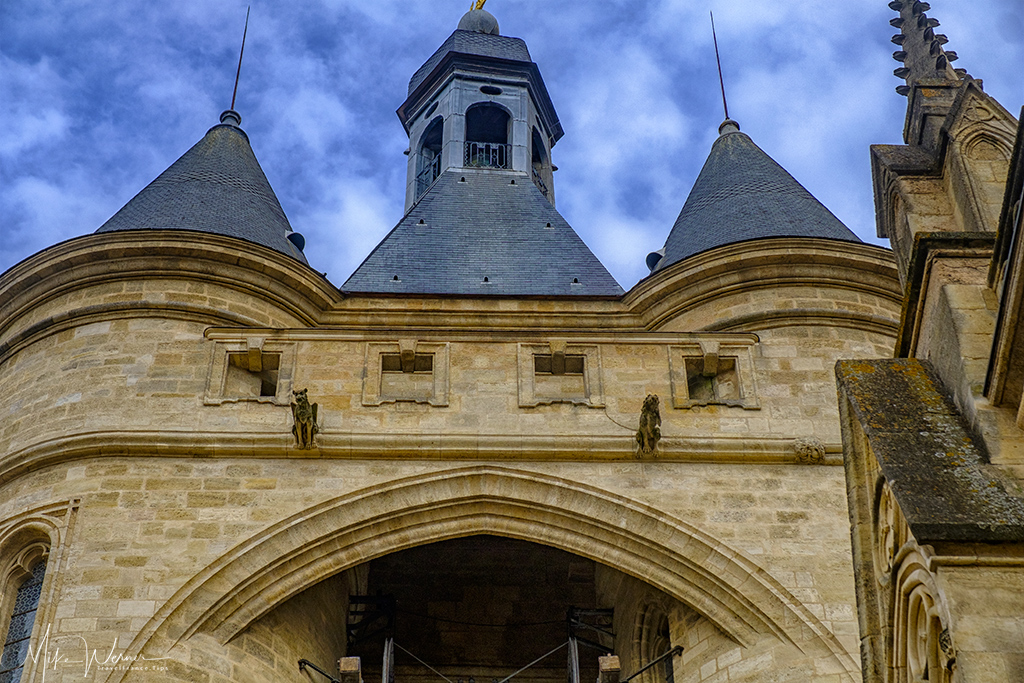 The top structure of the Porte Saint-Eloy/Grosse Cloche de Bordeaux in Bordeaux
The top structure of the Porte Saint-Eloy/Grosse Cloche de Bordeaux in Bordeaux View from the city side of the Porte Saint-Eloy/Grosse Cloche de Bordeaux in Bordeaux
View from the city side of the Porte Saint-Eloy/Grosse Cloche de Bordeaux in BordeauxWhat you see here is the top part (the bells) from the old City Hall of Bordeaux, sitting on the remainders of the Saint-Eloy gate. The reconstruction was accomplished in the 15th century while the original gate was constructed in the 12th century. The tower is part of the Saint-Eloy church.
The gate was used for the pilgrims who were travelling on Santiago de Compostela route.
This city/town forms part of one of the French legs of the Santiago de Compostela pilgrimage route.
Santiago de Compostela pilgrimage routes
The bells were used to signal the start of the grape harvesting (for the Bordeaux wines), or in case of a fire. The bells themselves weigh 7800 kg (17200 pounds) and are 2 meters high and wide.
Place de la Bourse
One of the other main attractions for tourists is the “Place de la Bourse“, the Stock Exchange Square. It’s not only the buildings alongside the square (the stock exchange building and the museum of the customs & excise) but it’s also the “miroir d’eau” (the water mirror) and the Garonne river.
 Place de la Bourse – Musee National des Douanes in Bordeaux
Place de la Bourse – Musee National des Douanes in Bordeaux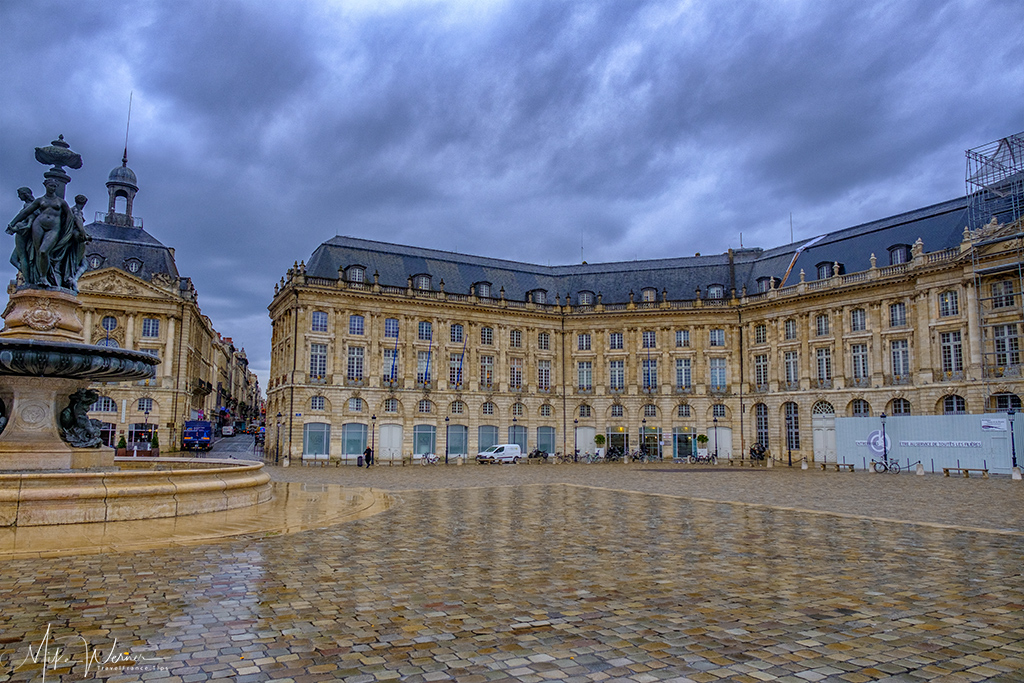 Part of the stock exchange of Bordeaux
Part of the stock exchange of Bordeaux The middle part of the square with its fountain in Bordeaux
The middle part of the square with its fountain in Bordeaux The ‘Miroir d’eau’ (Water Mirror) alongside the Garonne river in Bordeaux
The ‘Miroir d’eau’ (Water Mirror) alongside the Garonne river in Bordeaux Museum on the Stock Exchange Square seen from the Water Mirror in Bordeaux
Museum on the Stock Exchange Square seen from the Water Mirror in BordeauxThe “Water Mirror” (in French “Miroir d’Eau”) is a flat surface with a thin layer of water over it. This gives the surface and impression of a very big mirror.
The Stock Exchange is now the Chamber of Commerce. The statue and fountain in the center of the square was once upon a time the statue of King Louis XV, but it was destroyed during the French Revolution. The new statue/fountain was made in 1869.
The square and buildings (also named Port of the Moon) was built between 1730 and 1775 and is listed in the UNESCO World Heritage Sites.
Right next to the square and “Water Mirror” is the “Pont de Pierre” (the Stone Bridge):
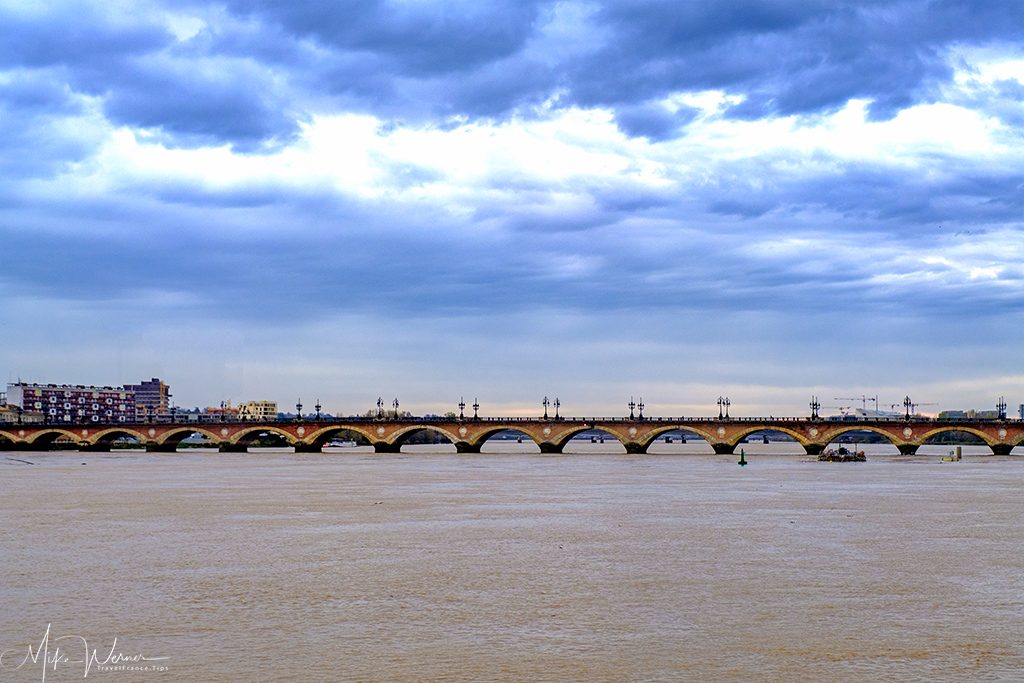
The bridge crosses the very large Garonne river. It is one of four bridges and was ordered by Napoleon Bonaparte I. It has 17 arches, representing the number of letters in Napoleon’s full name.
It was only recently that some of the arches were widened in order to allow barges to pass underneath that are transporting parts of the new Airbus A380 airplane.
A little bit further you will be able to see the (river) cruise ships moored alongside the quai.

Pollution
As stated in the first paragraph, Bordeaux is a very beautiful city, but… there is a lot of pollution and it shows on quite a lot of buildings. Some of the buildings are in a pretty bad state, and many are quite blackened by pollution. Here are just a few examples of polluted and buildings in dire need of some TLC.
 Polluted building in Bordeaux
Polluted building in Bordeaux Dilapidated and polluted building in Bordeaux
Dilapidated and polluted building in Bordeaux Top half polluted building
Top half polluted building Visible pollution on the building in Bordeaux
Visible pollution on the building in Bordeaux Nice balcony but in a bad state
Nice balcony but in a bad state Very black walls on this building in Bordeaux
Very black walls on this building in Bordeaux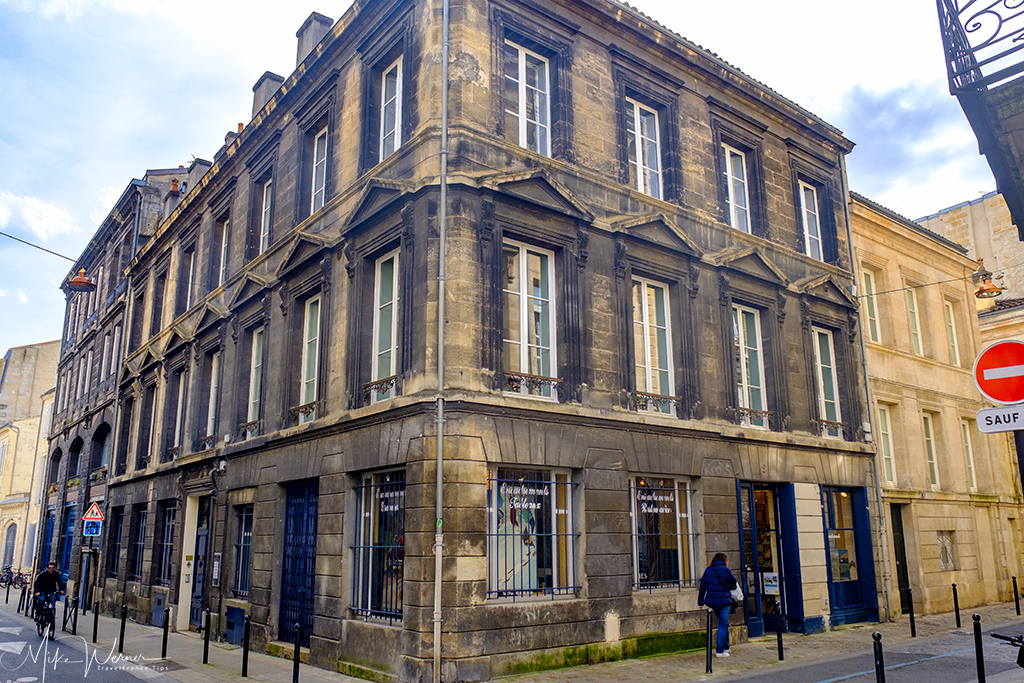 Clearly visible pollution on this building in Bordeaux
Clearly visible pollution on this building in BordeauxOdds & Ends
Here are some parts of Bordeaux that I could not classify in any of the chapters above:
Gallery of Fine Arts
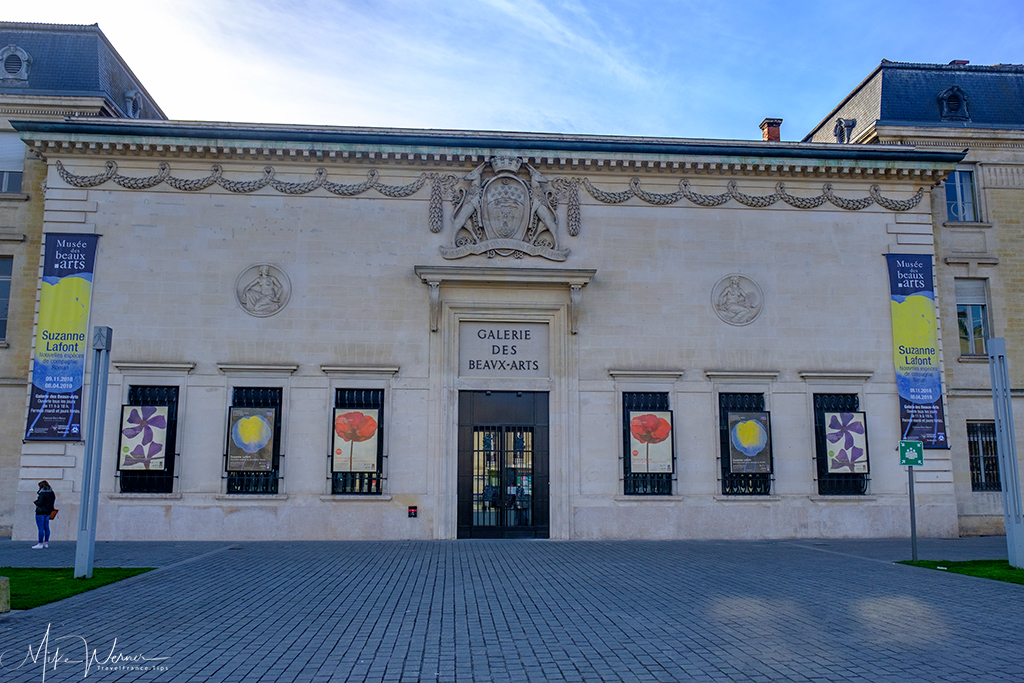 Gallery of Fine Arts annex building in Bordeaux
Gallery of Fine Arts annex building in BordeauxThe gallery is part of the Museum of Fine Arts, and is used as overflow and for special exhibitions. The building was built in 1936 and is only open when there is a temporary exhibition.
To see which exhibitions are on, please click here.
Palais des Sports de Bordeaux/Sports Arena
Bordeaux has a rather big sports arena used for a variety of sporting events.
 Palais des Sports de Bordeaux/Sports arena of Bordeaux
Palais des Sports de Bordeaux/Sports arena of Bordeaux The Sports arena next to the Saint-Paul-Saint-Francois-Xavier Church
The Sports arena next to the Saint-Paul-Saint-Francois-Xavier Church The arena was built in 1950, but used by the opera. It was only in 2016 that it was renovated and it became a sports arena.
Click here to read and see more about several of the churches in Bordeaux.
Frogs and Rosbif
This is a pub we encountered during our walks, and the name says it all… Frogs is the English nickname for the French, while the French call the English Rosbif!
 The Frogs and Rosbif pub
The Frogs and Rosbif pubThe building in which this pub is located was a 16th century woman’s prison. It was also the first pub to brew its own beer.
Click here to access their website.
Conclusion
Bordeaux is a very nice and comfortable city. It’s beautiful, even majestic, with some great monuments, pedestrian streets, shops and entertainment areas. There are plenty of public parks, and roads are easy to walk, even for wheelchairs. The public transportation system is top-notch.
On the downside, there is a lot of visible pollution, but today, the air quality is not bad. You’ll not feel it when walking, unless you are walking close to a major traffic artery.
Related Posts
- 10000
- 10000
 Here's a look at three out of 24 catholic churches (there are also 2 protestant temples, 3 orthodox churches, 1 jewish synagogue and 3 muslim mosques) to be found in Bordeaux. Basilica-of-St-Michael The St Michael Basilica is marked by its separate, 114 meters high, bell tower. The church was built…
Here's a look at three out of 24 catholic churches (there are also 2 protestant temples, 3 orthodox churches, 1 jewish synagogue and 3 muslim mosques) to be found in Bordeaux. Basilica-of-St-Michael The St Michael Basilica is marked by its separate, 114 meters high, bell tower. The church was built… - 10000
 Transport Getting there Air: Bordeaux operates an international airport with flights (scheduled and charter) throughout Europe. Click here to access the airport's website. Ferry: There are no direct ferries from the UK to Bordeaux. The closest in distance would be Bilbao or Santander (both in Spain). For a ferry coming…
Transport Getting there Air: Bordeaux operates an international airport with flights (scheduled and charter) throughout Europe. Click here to access the airport's website. Ferry: There are no direct ferries from the UK to Bordeaux. The closest in distance would be Bilbao or Santander (both in Spain). For a ferry coming… - 10000
- 10000
 Biarritz, in the South of France along the Atlantic ocean, is a very special place to visit. It has been special for over a century and half, as you can see from the who-is-who of celebrities that have and still do visit. Biarritz is part of the Basque country, so…
Biarritz, in the South of France along the Atlantic ocean, is a very special place to visit. It has been special for over a century and half, as you can see from the who-is-who of celebrities that have and still do visit. Biarritz is part of the Basque country, so…


